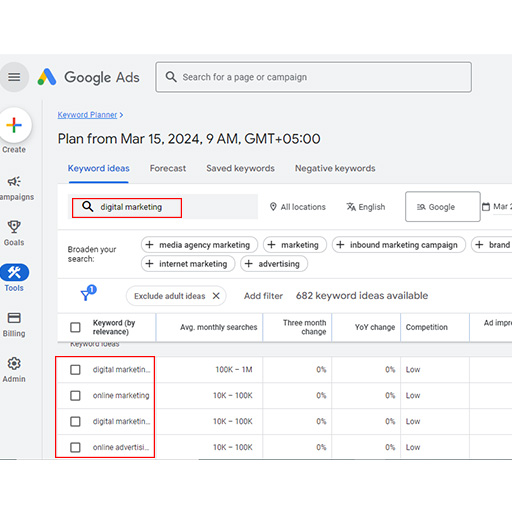What Are Keywords In SEO And How To Find The Keywords And Phrases

What are keywords
The concepts and subjects that characterize your material are called keywords. Known as “search queries” in SEO parlance, these are the words and phrases that users type into search engines to find information. These are your main phrases if you reduce everything on your page, including the writing, video, graphics, and so on, to just a few simple words or phrases.
Keyphrases are important in SEO because they help search engines like Google understand what your content is about and whether it is relevant to users’ search queries. By optimizing your website or content for relevant phrases, you enhance the likelihood that it will appear in search engine results pages (SERPs) when visitors search for those terms.
Keywords can be divided into two types:
Short-tail keywords are shorter, more broad terms that only contain one or two words. Examples include “shoes,” “digital marketing,” and “SEO.” Short-tail keywords have a high search volume, but they are also very competitive.
Long-tail keywords are longer, more precise phrases that typically contain three or more words. It might be, for instance, “best running shoes for women,” “digital marketing strategies for small businesses,” as well as “local SEO services in New York.” Long-tail keywords often have lower search volume but also lower competition, and they frequently result in higher conversion rates due to their more particular user intent.
You can use a variety of tools and approaches to identify keywords and phrases for your business or website. This is a step-by-step guide.
Brainstorm Seed Keywords
- Google Keyword Planner
- SEMrush
- Ahrefs
- Moz Keyword Explorer
- Ubersuggest
- KeywordTool.io
Analyze Competitors
Take a look at the terms your competitors are targeting. This might assist you understand what keywords are bringing traffic to their websites and identify potential keywords for your own campaign. Tools such as SEMrush and Ahrefs include competition analysis tools that might assist you in identifying competitor keywords.
Consider Long-Tail Keywords
Long-tail keywords are longer, more precise phrases that tend to have lower search volume but greater conversion rates. These can be useful for targeting certain audiences and collecting highly relevant traffic. Consider specific problems, queries, or subjects relating to your business that customers may search for.
Use Google Autocomplete and Related Searches
Type your seed terms into Google’s search bar and see what autocomplete recommendations show. These are often searched phrases that can help you come up with extra keywords. Scroll to the bottom of the search results page to see the “Related searches” section for additional keyword suggestions.
Review Your Website Analytics
Analyze the search phrases people use to locate your website using tools such as Google Analytics or your website’s search query data (if available). This allows you to identify keywords that are already driving traffic to your website and optimize your content accordingly.
Group Keywords by Relevance
Organize your keyword list into groups based on relevance and similarity. This will enable you to generate targeted content and ad campaigns for each keyword group.
Refine and Expand Your List
Continuously refine and grow your keyword list over time. Monitor keyword performance, try new keywords, and adjust your strategy to reflect changes in search trends and user behavior.
By following these steps and employing a variety of keyword research tools and methodologies, you may efficiently identify keywords and phrases to optimize your website’s content, boost search engine visibility, and attract relevant traffic to your business.